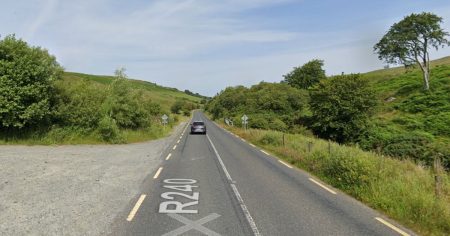England is home to over 100,000 farm holdings that collectively encompass approximately 22 million acres of land. This expansive agricultural landscape showcases the diversity and scale of farming operations across the region, ranging from small family-owned farms to larger commercial enterprises. However, a closer examination of the data provided by the Department for Environment, Food and Rural Affairs (Defra) reveals a stark contrast in the ownership and management of farmland. Within this vast agricultural network, only a small fraction of farms—specifically, 2,568 very large farms—are responsible for managing a substantial portion of land, totaling 5.6 million acres.
The presence of these very large farms highlights a significant concentration of land ownership in the English agricultural sector. These larger entities appear to dominate the ownership landscape, illustrating a trend toward consolidation within the farming industry. While smaller farms play a critical role in preserving local agricultural practices and contributing to rural economies, the sheer scale at which these larger farms operate can have far-reaching implications for agricultural policy, land use, and environmental stewardship.
Aggregate data from Defra indicates that the larger farms cover approximately 25% of the total farmland area in England, despite representing only a small percentage of the total number of farms. This leads to questions about the future of small and medium-sized holdings, as market pressures and agricultural policies may increasingly favor larger operations. This demographic shift could also impact the diversity of crops grown, with larger farms often more inclined to specialize in high-yield, commercially viable crops that may not align with local food production or biodiversity goals.
The concentration of land in the hands of a few large operators raises concerns about the potential environmental impacts of intensive farming practices. Large farms often utilize advanced agricultural technologies and chemical inputs to maximize yields, which can lead to issues such as soil degradation, water pollution, and reduced biodiversity. As policymakers and environmental advocates work toward more sustainable agricultural practices, finding a balance between the efficiencies of large-scale operations and the ecological imperative of sustainable land use becomes increasingly critical.
Additionally, the socio-economic implications of this industrialized farming landscape warrant attention. Large farms can drive down labor costs and shift economic benefits away from local communities, as their scale enables them to operate with fewer workers and focus on export-driven models. Conversely, smaller farms often sustain local economies by providing jobs and contributing to community resilience. Policymakers must grapple with these socio-economic dynamics, ensuring that support mechanisms for agriculture promote a diverse range of farm sizes and types rather than favoring larger enterprises exclusively.
In conclusion, the agricultural landscape of England is marked by a significant concentration of land ownership among a limited number of very large farms, which manage a considerable share of the country’s farmland. This trend raises important questions regarding the sustainability, economic viability, and social equity of farming practices in the region. By creating policies that foster diversity in farm sizes and encourage sustainable practices, legislators can better support local agricultural communities while addressing the pressing environmental challenges that arise from current farming practices. The future of farming in England will depend not only on addressing the challenges posed by large-scale operations but also on creating a balanced agricultural landscape that supports both large and small farmers alike.














